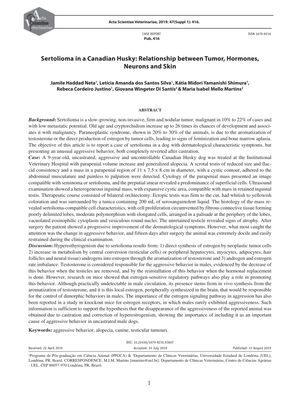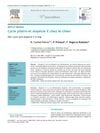Sertolioma in a Canadian Husky: Relationship Between Tumor, Hormones, Neurons, and Skin
July 2019
in “
Acta Scientiae Veterinariae
”

TLDR Removing a testicular tumor in a dog reduced its aggressive behavior and skin problems.
In a case study of a 9-year-old uncastrated Canadian Husky dog with aggressive behavior and dermatological symptoms such as generalized alopecia, a diagnosis of sertolioma was made. The dog presented with a parapenial mass and a reduced, flaccid scrotal testis. After bilateral orchiectomy, histology confirmed sertolioma, characterized by cell proliferation and moderate polymorphism. Remarkably, post-surgery, the dog's aggressive behavior significantly decreased, and dermatological symptoms improved. The study suggests that hyperestrogenism resulting from the sertolioma, which involves direct estrogen synthesis by tumor cells and peripheral aromatization of testosterone, may have contributed to the dog's aggression. The disappearance of aggressive behavior post-castration supports the hypothesis that estrogen, though typically low in male circulation, plays a role in aggression when locally synthesized in the brain. This case highlights the importance of considering hyperestrogenism as a potential cause of aggression in uncastrated male dogs.
